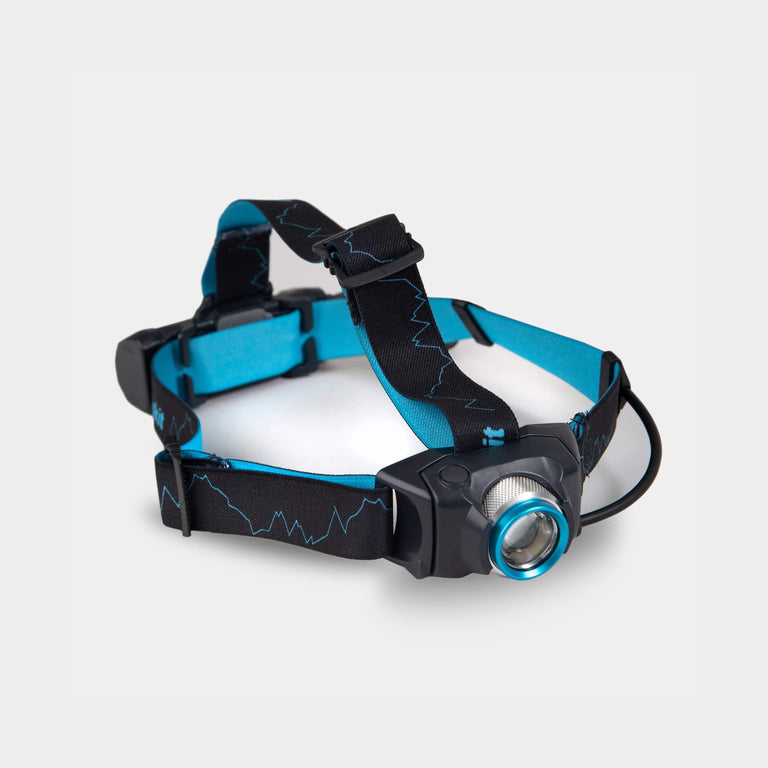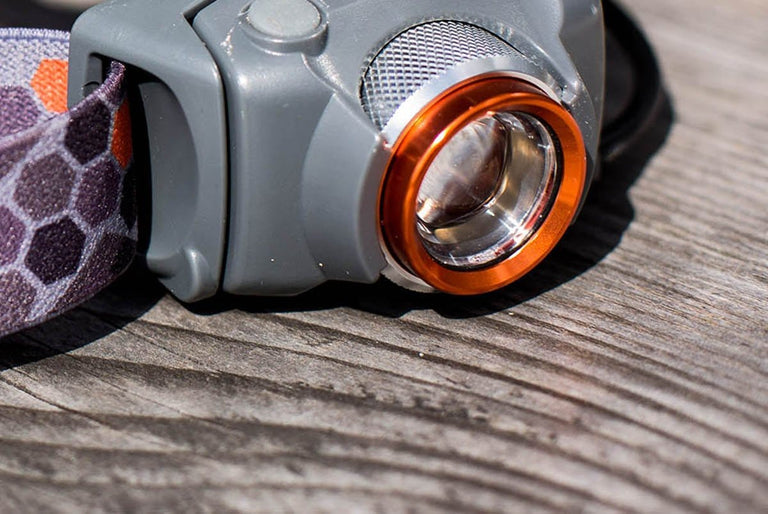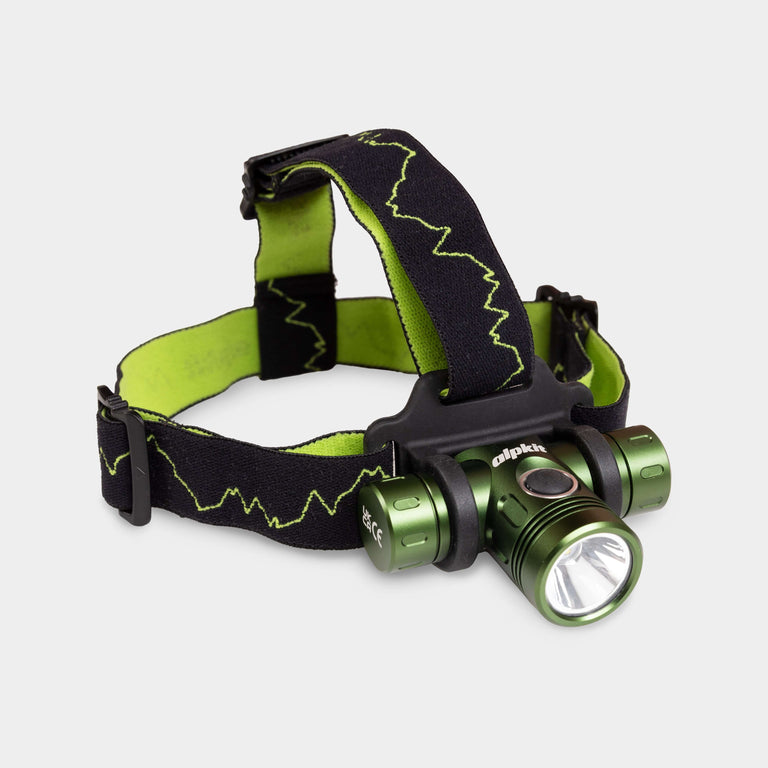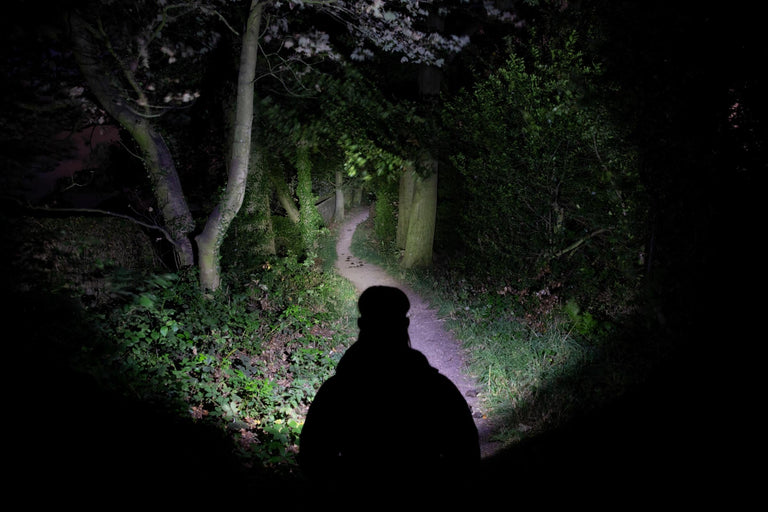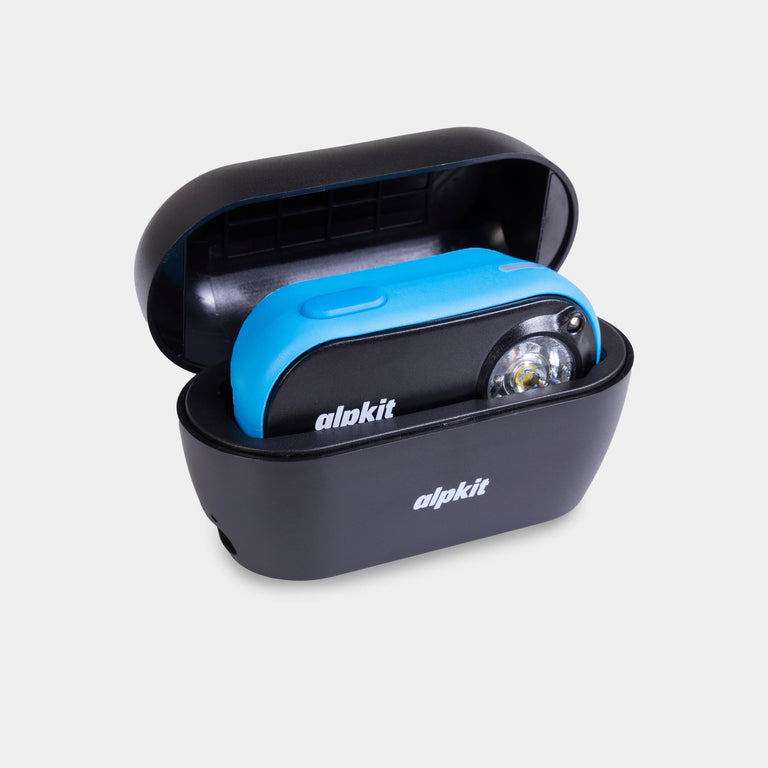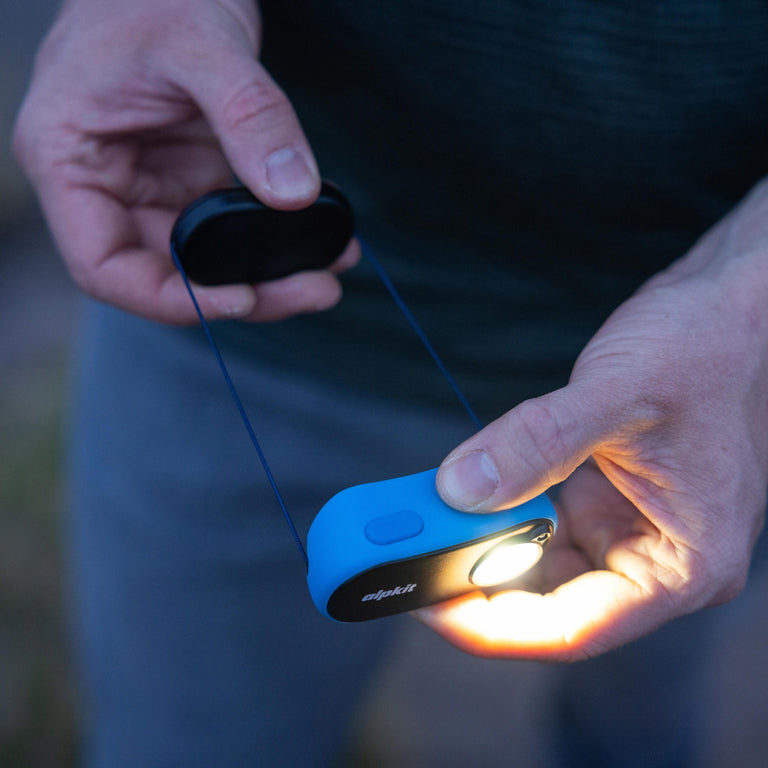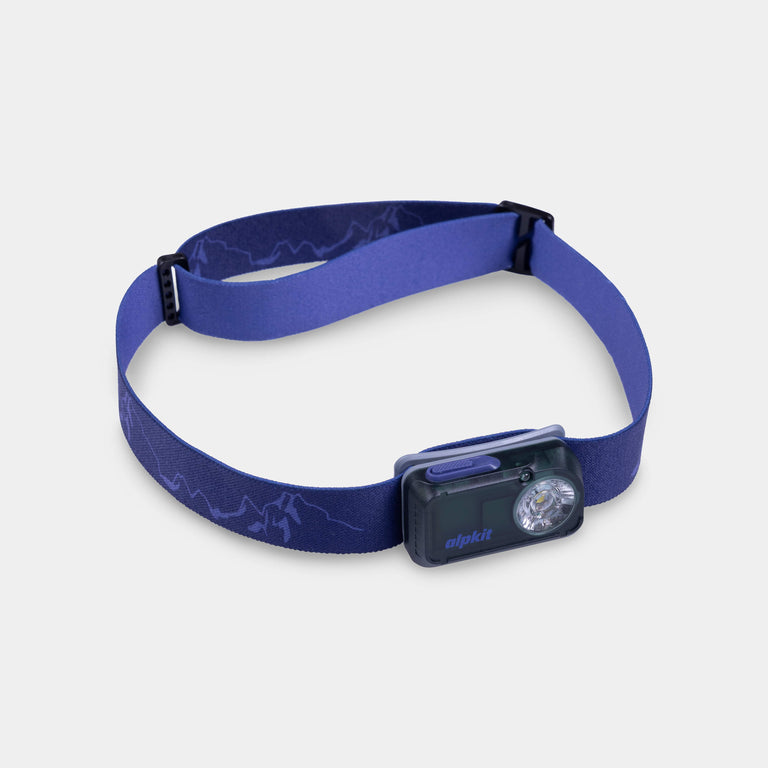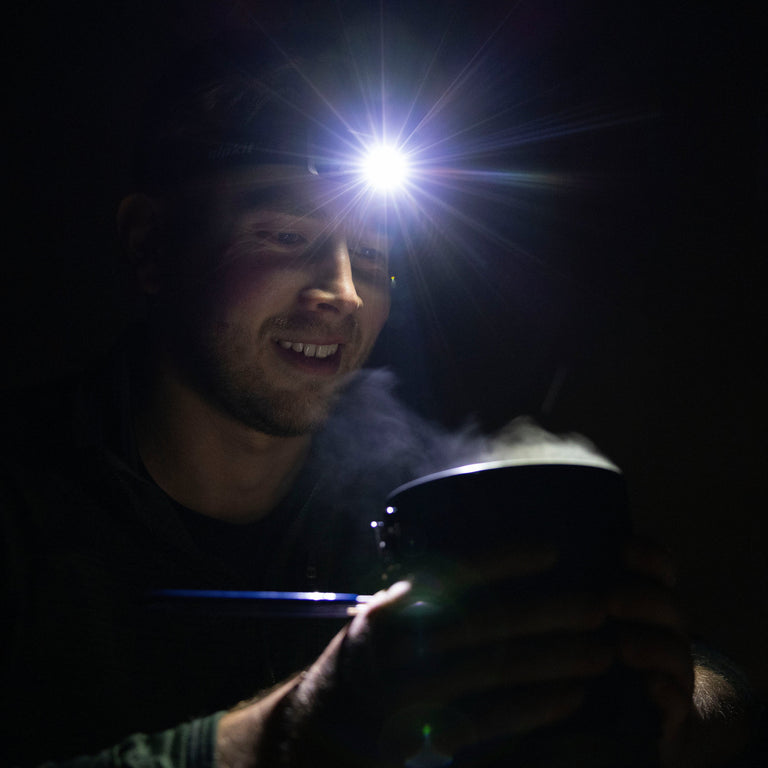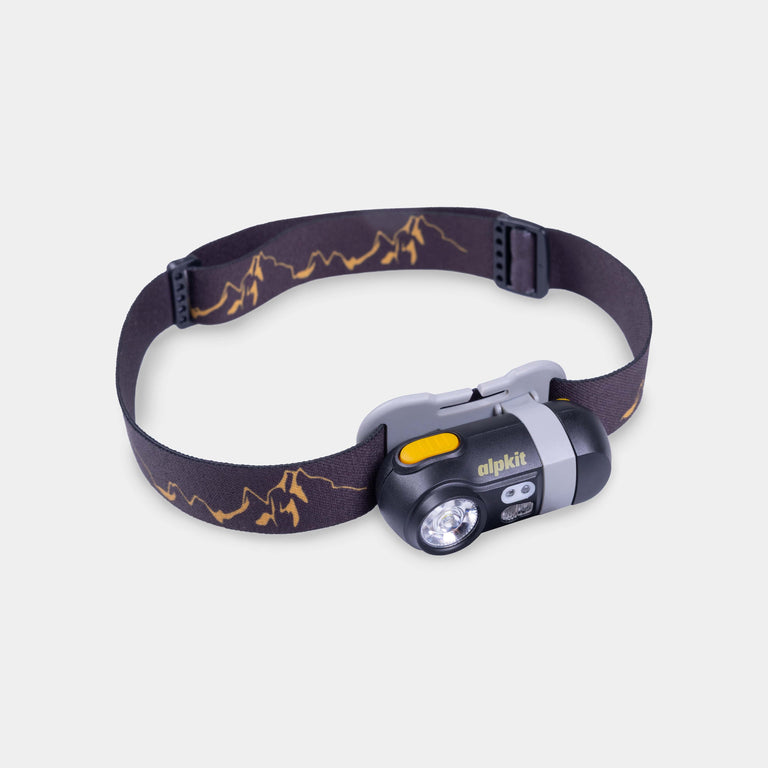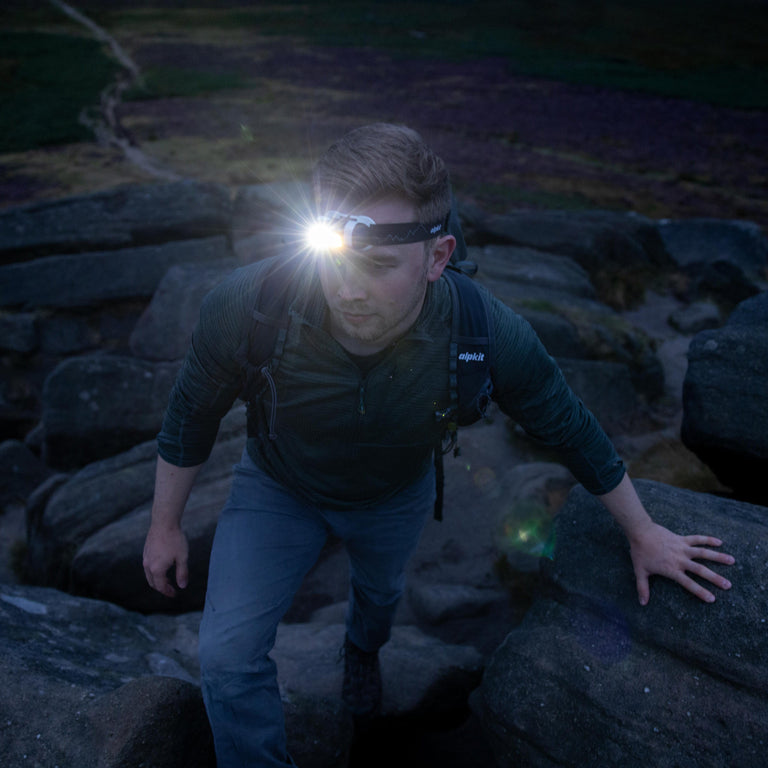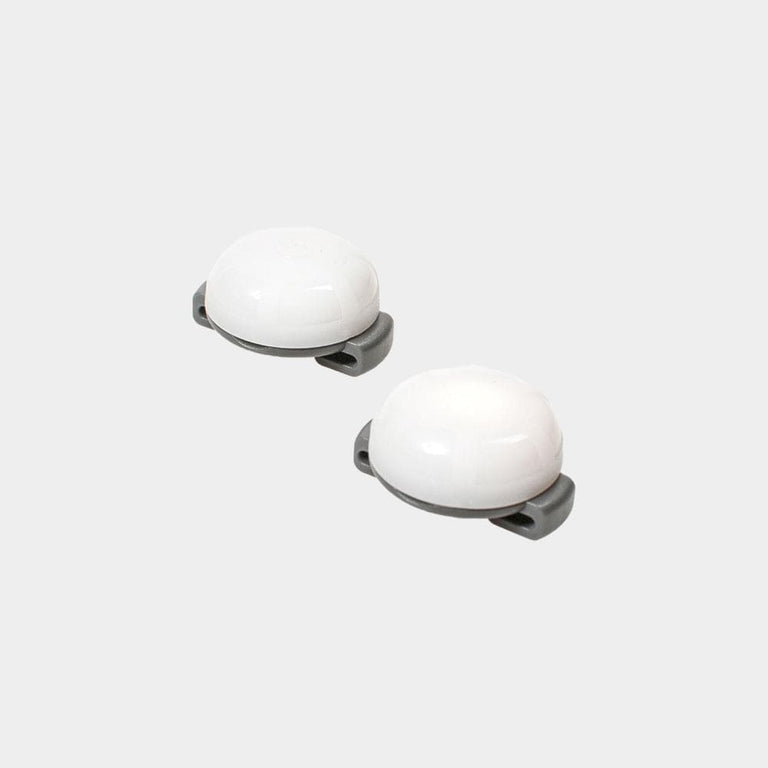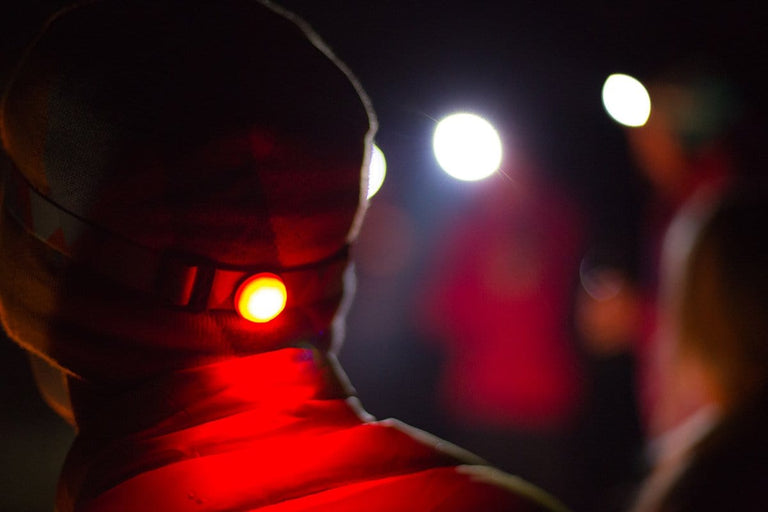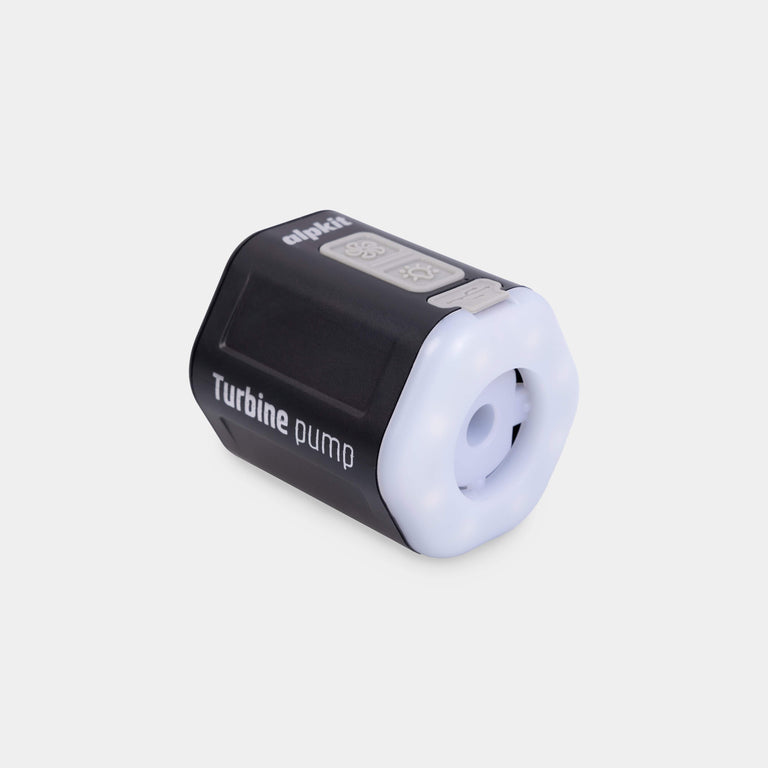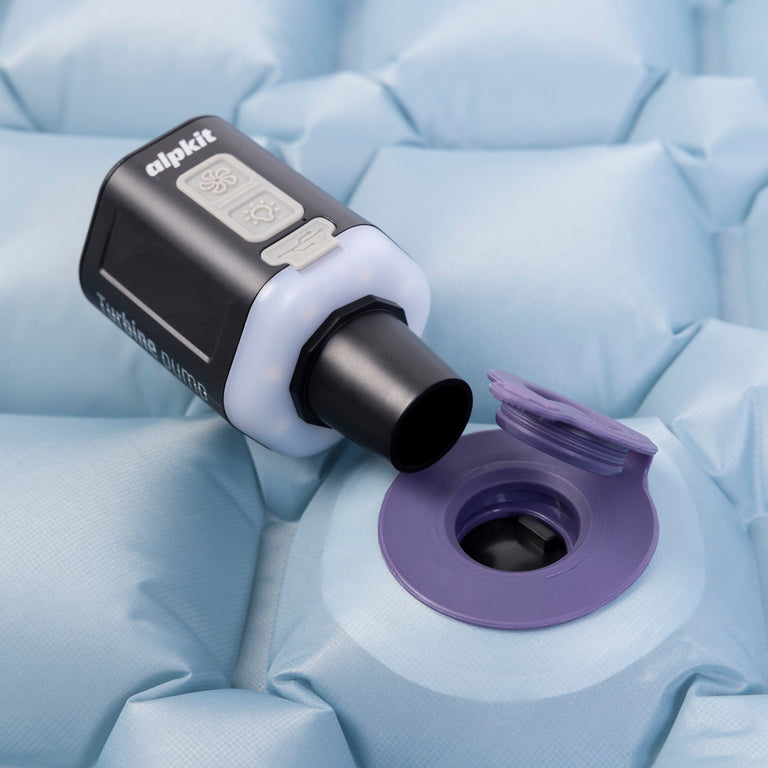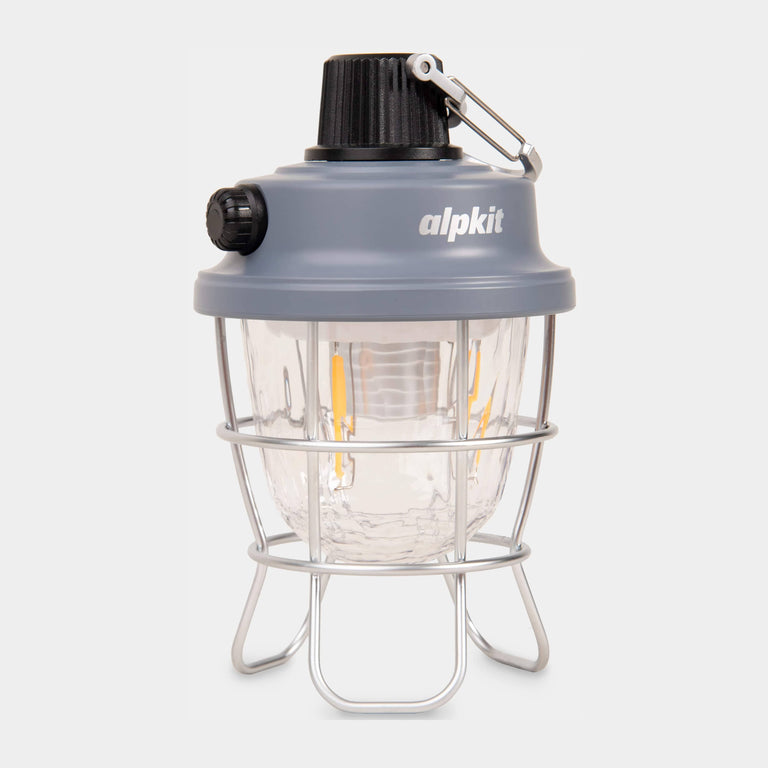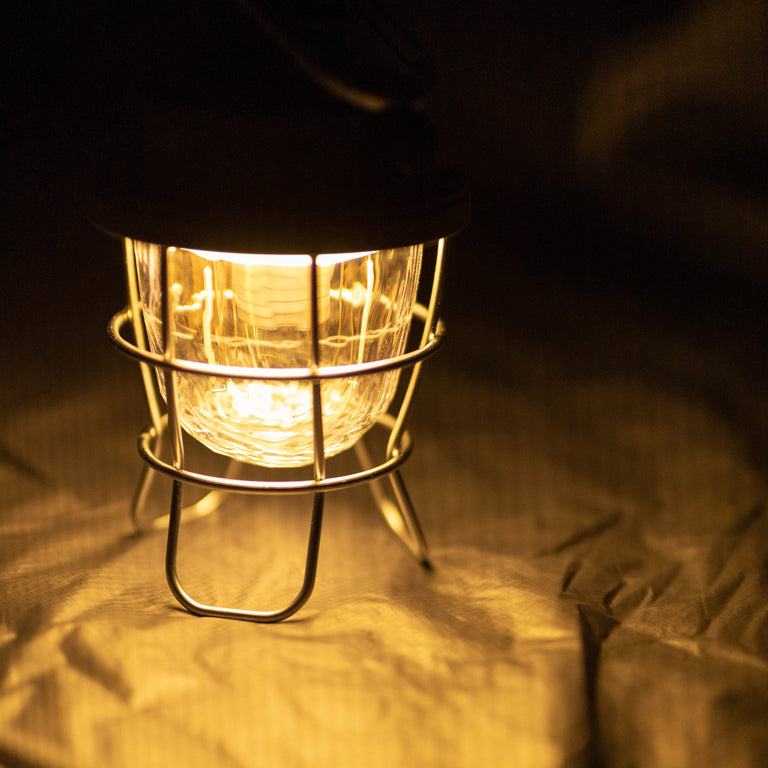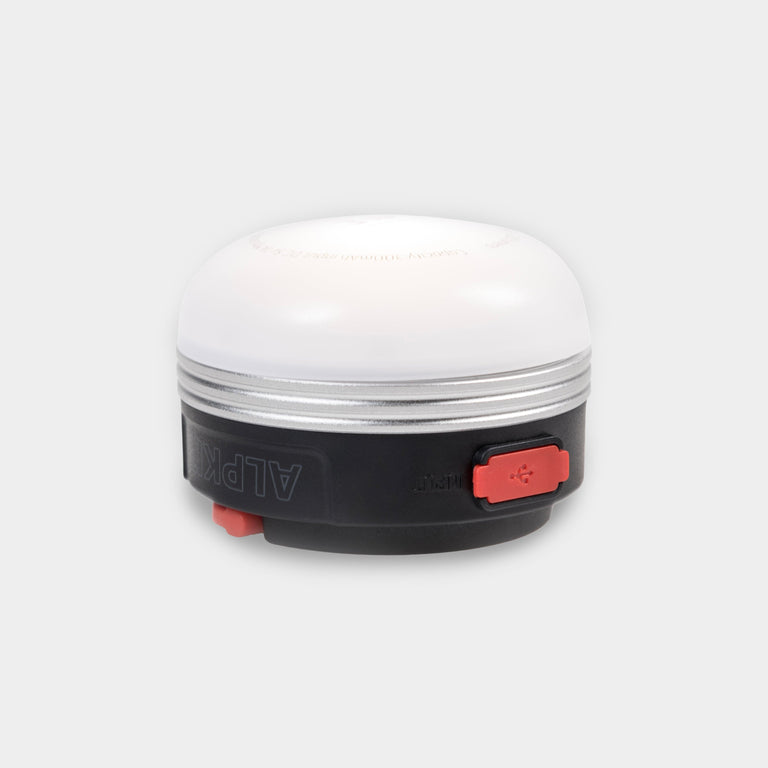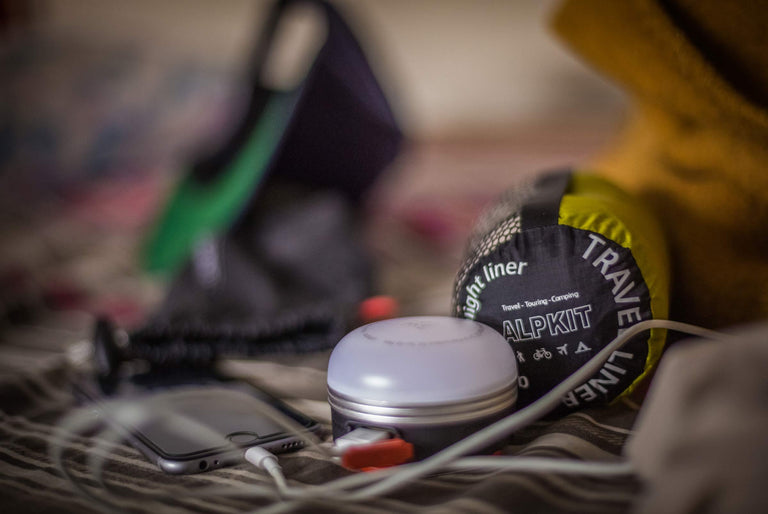
Light up your path with the best headtorch for your activity. Find out what brightness, fit and features to look for in low-light adventures.
Head torches aren’t just for emergency backup; they’re the enablers of Alpine starts, eerie night rides and thrilling moonlit trail runs.
Head torches are essential for outdoor activities such as hill walking, climbing, camping, night runs, and repairs. They provide hands-free illumination, making them ideal for tasks that require both hands.
With the light source mounted on your head, you can enjoy intuitive, directional lighting that follows your gaze. These devices are often compact and lightweight, perfect for winter hillwalking and night navigation. They offer a blend of durability, energy efficiency, and versatile lighting modes, ensuring you are equipped for any outdoor activity.

How to choose a head torch
- What are you using it for?
- How many lumens do I need for a head torch?
- What are the best batteries for headtorches?
- Do I need a waterproof head torch?
- What features should a head torch have?
- What are the best headtorches for specific activities?

What are you using it for?
"To see in the dark", we hear you shout. Great, we like your humour.
All head torches share some common traits: they strap to your head, and they provide light, but some are designed with a set of features optimised to a particular activity.
Thinking about your end use is the first and most important question to ask yourself. This will determine the most important features and what you can do without.
Of course you might just want one headtorch to do everything, and that's fine as well. Who hasn't, over time, strapped their headtorch to a bike or canoe, in which case you are going to want to know which has the fewest compromises.

For winter mountaineering, long battery life and long beam length for navigation will probably be your priority. For trail running, you’re more likely to prioritise low weight, balance and a secure fit. For night navigation, you’ll want to be able to swap between a dim flood beam or red night light for map reading and a bright spotlight to pick out features and follow your bearings. Standup paddle boarding at night? Waterproofing will be your priority.
Major factors to consider:
- Brightness
- Beam length/shape
- Battery tyle and burn time
- Weight
- Ease of use

How many lumens do I need for a head torch?
Head torch brightness is usually measured in lumens, a unit that tells you how much visible light a bulb produces per unit of time.
Here’s a guide to how many lumens you need for each activity:
- 10 lumens – For close-up stuff (pitching tents/cooking/reading). Many torches have a 10 lumen Eco mode to save power.
- 60 lumens – For walking when you don’t need to navigate (back from the pub, valley walking, familiar routes).
- 150 lumens – For trail running on familiar routes (local runs, at steady to medium pace, when you do not have to look too far ahead).
- 300 lumens – For navigation (not just map reading but picking out landmarks and following your bearings).
- 400 lumens – For winter navigation (when there’s snow on the ground and fewer features for you to navigate by).
- 500 lumens - For winter mountaineering (when it comes to mountaineering and alpinism, the more powerful, the better - within reason. Ideally, you’d want 500 lumens to find your route in the morning or safely find your descent route at night).

But how many lumens you need does depend on your end use. If you’re only using your head torch for pottering about the campsite, you don’t need to fork out for the brightest head torch money can buy. Also, higher-lumen head torches will generally have a shorter battery life if you leave them on their highest setting.
Why you should consider more than lumens
High-lumen head torches won’t necessarily have the longest beam length. Some torches are designed with a lens to focus light into a narrow beam, others to provide a wide flood of light. It’s always a good idea to compare the lumen rating with the beam length; better still, try the torch out in a shop and look at the beam shape.
Do I need a rechargeable head torch?
Rechargeable batteries are common in head torches; most use standard USB charging. This means you can recharge them pretty much anywhere (cars, cafes, solar panels, battery packs, our very own Lampray). This is ace for your evening run or overnight camp and better value in the long run.

On longer excursions, there is the chance that your battery may run out mid-activity. Manage your battery use by using only the power setting you need. For example, don't watch your pasta boil in high mode. Our Kula torch lasts 3.5 hrs on high but a whopping 80 hrs on Eco.
Be prepared with spares. Our Qark can use rechargeable battery packs and AAA batteries interchangeably with no drop in performance. That way, you can repeatedly recharge your head torch and carry some AAA batteries if it runs out between charges.

Rear battery pack or front battery pack?
Some head torches use a rear battery pack, which allows them to carry more battery power without weighing down the front of the head torch. Some place the batteries in these rear compartments to balance out the weight of the torch and stop the light bobbing when you’re running.
For neatness and to remove cables, most head torches now have their battery compartment at the front with the light itself. These head torches are generally lighter and fit to your climbing helmet better.

Weight vs battery power
It’s worth noting that the brighter and longer-lasting your head torch is, the more powerful the batteries will be and the heavier the head torch is. The lights and straps weigh very little, so most of the weight comes from the batteries. You don’t want to weigh your neck down with a heavy head torch if you don’t need all that battery power (especially when trail running). Equally, for adventure races when you could be out all night, having a powerful battery pack (like the one on our Manta) might be necessary.

Do I need a waterproof head torch?
Head torches generally have an IP (Ingress Protection) rating to indicate weatherproofing. We’d recommend a minimum of IPX4 or IP64 for year-round use as these can cope with splashing and rainwater from any angle, making your head torch durable enough for UK weather.
If you’re likely to submerge your head torch at any point, we’d opt for IPX7 (submersible) as a minimum, like our Prism waterproof head torch.
What are IP and IPX ratings? What do they mean?
You’ll often hear these ratings being used for outdoor electronics as an easy comparison tool. Higher numbers sound good, but it can be useless as a comparison tool unless you know what it all means.
IP = Ingress Protection – This is simply the standard or class for the code.
First digit = Solids Protection – This is the measure of how ‘dustproof’ the device is. The scale runs from 0 to 6.
Second digit = Liquids Protection – This shows how waterproof the device is. 0 has no protection, 8 (the highest) allows continuous immersion beyond 1m without issue.
But what about IPX ratings?
Simply put, the device has not been measured against dust-proofing, and so the ‘solids’ digit is replaced with an X. In this case it’s reasonable to suggest that if the device has a ‘liquids’ rating of 4 or greater, it should also be sufficiently dust-proof.
So what do our new torches get?
Vallis: IP64 - Protected from total dust ingress. Protected from water spray (rain) from any direction
Muon: IP64 - Protected from total dust ingress. Protected from water spray (rain) from any direction.
Viper: IPX6 - Protected from total dust ingress. Protected from high-pressure water jets from any direction.
Qark: IPX6 - Protected from total dust ingress. Protected from high-pressure water jets from any direction.
Prism: IPX7 - Protected from total dust ingress. Protected from immersion between 15 centimetres and 1 metre in depth.
Manta: IP64- Protected from total dust ingress. Protected from water spray (rain) from any direction.

What features should a head torch have
We have spent a lot of time ensuring each of our head torches has all of the features you need and none of the ones you don't.
Mode memory
Just because you have a feature-rich headtorch, it doesn't mean you want to use these features all the time. With mode memory, your head torch will return to the mode you previously used. Set the mode and get on with what you need to do. Torches that include this handy feature are Ionic, Kula and Graviton.

Focus beam adjuster
While some head torches have entirely separate spotlights (narrow beams) and floodlights (wide beams), many use a focus adjuster to enable you to pick the precise width of your beam. Wide beams work best for close-up tasks like map reading, while focused beams are better for picking out points in the distance.
Swapping between spot to flood with the click of a button is often the least fiddly. However, being able to tailor your beam width completely can be useful in some situations; you may find a beam width somewhere in the middle is better for walking over rough terrain or fast trail running when you want to be able to scout the whole trail for the easiest route.

Brightness modes
Multiple brightness settings allow you to conserve battery life when you don’t need to use full (or even medium) power. Whilst having more settings (or even fully adjustable brightness) gives you more control, it can make operating your head torch more complicated – which is the last thing you need when you’re cold and tired or wearing thick gloves.

Light sensor mode
Light reactive sensors (like those on our Viper) react to your environment and adjust the brightness of your torch accordingly. It’s a bit like having an automatic focus beam, growing dimmer when you look at your map and brighter when you face into the distance. This saves you from constantly clicking through the settings and keeps your head torch running efficiently, conserving the battery life.

Multiple LED colours
Many head torches have coloured LEDs that provide the best light for different situations.
- Red light helps you to maintain your night vision for things like stargazing and won’t affect your camera as much when taking photos at night (we also reckon it attracts fewer insects).
- Green light is ideal for map reading and is less visible to various wildlife species.
- Head torches with rear battery packs often have a red safety light at the back, so you can be seen by the rest of your group or by passing traffic.
Button size and ease of use
If you expect to use your head torch in extreme conditions, it’s worth checking that you can operate your head torch buttons and dials with thick gloves. The fewer settings and the easier to adjust your head torch is, the less faffing you’ll need to do when you’re halfway up a mountain.
Lock mode
Lock mode prevents


